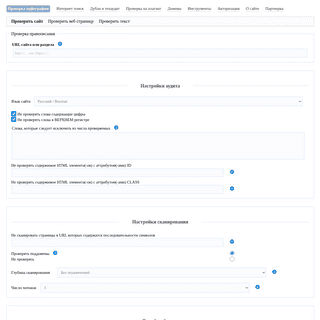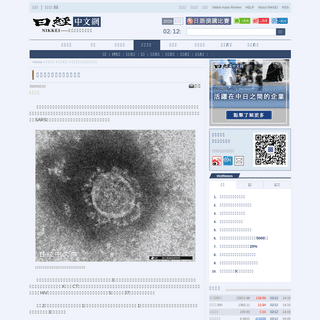Are you over 18 and want to see adult content?
More Annotations

A complete backup of https://iowaaging.gov
Are you over 18 and want to see adult content?

A complete backup of https://nana1004.com
Are you over 18 and want to see adult content?

A complete backup of https://ffmoto.org
Are you over 18 and want to see adult content?

A complete backup of https://orpho.ru
Are you over 18 and want to see adult content?

A complete backup of https://todoboda.com
Are you over 18 and want to see adult content?

A complete backup of https://statref.com
Are you over 18 and want to see adult content?

A complete backup of https://aboutus.org
Are you over 18 and want to see adult content?

A complete backup of https://nueconceal.com
Are you over 18 and want to see adult content?

A complete backup of https://theflyfishingforum.com
Are you over 18 and want to see adult content?

A complete backup of https://whatfinger.com
Are you over 18 and want to see adult content?

A complete backup of https://anpocs.com
Are you over 18 and want to see adult content?

A complete backup of https://regenttaipei.com
Are you over 18 and want to see adult content?
Favourite Annotations

A complete backup of www.standaard.be/cnt/dmf20200211_04844077
Are you over 18 and want to see adult content?

A complete backup of www.kicker.de/769428/artikel
Are you over 18 and want to see adult content?

A complete backup of www.bbc.com/hindi/live/india-51442299
Are you over 18 and want to see adult content?
Text
INSTALLATION
Installing with conda¶. To install PySAL and all its dependencies, we recommend using the conda package manager. This can be obtained by installing the Anaconda Distribution (a free Python distribution for data science), or through miniconda (minimal distribution only containing Python and the conda package manager).. Using conda, PySAL can be installed as follows: TUTORIAL — ESDA V2.3.6 MANUAL Contents: Exploratory Analysis of Spatial Data: Spatial Autocorrelation. Local join counts. Assessing local patterns of spatial heteroskedasticity. Understanding the LOSH statistic. Interpreting the LOSH statistic. Inference on the LOSH statistic. Applying the LOSH statistic on a dataset. Geosilhouettes: geographical measures of cluster fit. EXPLORATORY SPATIAL DATA ANALYSIS IN PYTHON Join counts. One way to formalize a test for spatial autocorrelation in a binary attribute is to consider the so-called joins.A join exists for each neighbor pair of observations, and the joins are reflected in our binary spatial weights object wq. Each unit can take on one of two values “Black” or “White”, and so for a given pair of neighboring locations there are three differentESDA.G_LOCAL
esda.G_Local. ¶. class esda. G_Local(y, w, transform='R', permutations=999, star=False, keep_simulations=True) ¶. DistanceBand, weights instance that is based on threshold distance and is assumed to be aligned with y. the type of w, either ‘B’ (binary) or ‘R’ (row-standardized) the number of randompermutations for
ESDA.MORAN — ESDA V2.3.6 MANUAL esda.Moran¶ class esda. Moran (y, w, transformation = 'r', permutations = 999, two_tailed = True) ¶. Moran’s I Global Autocorrelation Statistic. Parameters y array. variable measured across n spatial units. w W. spatial weights instance. transformation str. weights transformation, default is row-standardized “r”.EXAMPLE_DATASETS
Datasets for use with libpysal. As of version 4.2, libpysal has refactored the examples package to:. reduce the size of the source installation; allow the use of remote datasets from the Center for Spatial Data Science at the Unversity of Chicago, and other remotes; This notebook highlights the new functionality CHOROPLETH — MAPCLASSIFY V2.4.0 MANUAL Choropleth¶. mapclassify is intended to be used with visualizaiton packages to handle the actual rendering of the choropleth maps defined on its classifiers. In this notebook, we explore some examples of how this is done. The notebook also includes an example that combines mapclassify with ipywidgets to allow for the interactive explorationof the choice of:
WEIGHTS - PYSAL.ORG
The two components are separated in the southern part of the country, with the smaller component to the east and the larger component running through the rest of the country to the west.MGWR - PYSAL.ORG
Multiscale Geographically Weighted Regression (MGWR). This module provides functionality to calibrate multiscale (M)GWR as well as traditional GWR. It is built upon PYSAL: PYTHON SPATIAL ANALYSIS LIBRARY PySAL is an open source cross-platform library for geospatial data science with an emphasis on geospatial vector data written in Python. It supports the development of high level applications for spatial analysis, such as. detection of spatial clusters, hot-spots,INSTALLATION
Installing with conda¶. To install PySAL and all its dependencies, we recommend using the conda package manager. This can be obtained by installing the Anaconda Distribution (a free Python distribution for data science), or through miniconda (minimal distribution only containing Python and the conda package manager).. Using conda, PySAL can be installed as follows: TUTORIAL — ESDA V2.3.6 MANUAL Contents: Exploratory Analysis of Spatial Data: Spatial Autocorrelation. Local join counts. Assessing local patterns of spatial heteroskedasticity. Understanding the LOSH statistic. Interpreting the LOSH statistic. Inference on the LOSH statistic. Applying the LOSH statistic on a dataset. Geosilhouettes: geographical measures of cluster fit. EXPLORATORY SPATIAL DATA ANALYSIS IN PYTHON Join counts. One way to formalize a test for spatial autocorrelation in a binary attribute is to consider the so-called joins.A join exists for each neighbor pair of observations, and the joins are reflected in our binary spatial weights object wq. Each unit can take on one of two values “Black” or “White”, and so for a given pair of neighboring locations there are three differentESDA.G_LOCAL
esda.G_Local. ¶. class esda. G_Local(y, w, transform='R', permutations=999, star=False, keep_simulations=True) ¶. DistanceBand, weights instance that is based on threshold distance and is assumed to be aligned with y. the type of w, either ‘B’ (binary) or ‘R’ (row-standardized) the number of randompermutations for
ESDA.MORAN — ESDA V2.3.6 MANUAL esda.Moran¶ class esda. Moran (y, w, transformation = 'r', permutations = 999, two_tailed = True) ¶. Moran’s I Global Autocorrelation Statistic. Parameters y array. variable measured across n spatial units. w W. spatial weights instance. transformation str. weights transformation, default is row-standardized “r”.EXAMPLE_DATASETS
Datasets for use with libpysal. As of version 4.2, libpysal has refactored the examples package to:. reduce the size of the source installation; allow the use of remote datasets from the Center for Spatial Data Science at the Unversity of Chicago, and other remotes; This notebook highlights the new functionality CHOROPLETH — MAPCLASSIFY V2.4.0 MANUAL Choropleth¶. mapclassify is intended to be used with visualizaiton packages to handle the actual rendering of the choropleth maps defined on its classifiers. In this notebook, we explore some examples of how this is done. The notebook also includes an example that combines mapclassify with ipywidgets to allow for the interactive explorationof the choice of:
WEIGHTS - PYSAL.ORG
The two components are separated in the southern part of the country, with the smaller component to the east and the larger component running through the rest of the country to the west.MGWR - PYSAL.ORG
Multiscale Geographically Weighted Regression (MGWR). This module provides functionality to calibrate multiscale (M)GWR as well as traditional GWR. It is built uponSPLOT - PYSAL
splot. Visual analytics for spatial analysis with PySAL. What is splot? splot connects spatial analysis done in PySAL to different popular visualization toolkits like matplotlib.The splot package allows you to create both static plots ready for publication and interactive visualizations for quick iteration and spatial data exploration. The primary goal of splot is to enable you to visualizePROCESS - PYSAL.ORG
Point Processes. Author: Serge Rey sjsrey@gmail.com and Wei Kang weikang9009@gmail.com. Introduction. One philosophy of applying inferential statistics to spatial data is to think in terms of spatial processes and their possible realizations.API REFERENCE
pysal.model: Spatial Statistical Models¶. access: Spatial Accessibility. mgwr: Multiscale Geographically Weighted Regression. spglm: Sparse Generalized Linear ModelsAPI REFERENCE
region.AZP (gdf, w, attrs_name). AZP involves class offering the implementation of the automatic zoning procedure algorithm. region.MaxPHeuristic (gdf, w, attrs_name, ). The max-p-regions involves the aggregation of n areas into an unknown maximum number of homogeneous regions, while ensuring that each region is contiguious and satisfies a minimum threshold value imposed CENTROGRAPHY OF POINT PATTERNS Centrography of Point Patterns. Authors: Serge Rey sjsrey@gmail.com and Wei Kang weikang9009@gmail.com. Introduction. Centrography refers to a set of descriptive statistics that provide summary descriptionsof point patterns.
SPAGHETTI — SPAGHETTI V1.6.0 MANUAL spaghetti¶ SPAtial GrapHs: nETworks, Topology, & Inference¶. Spaghetti is an open-source Python library for the analysis of network-based spatial data. Originating from the network module in PySAL (Python Spatial Analysis Library), it is under active development for the inclusion of newly proposed methods for building graph-theoretic networks and the analysis of network events.MGWR - PYSAL.ORG
Multiscale Geographically Weighted Regression (MGWR). This module provides functionality to calibrate multiscale (M)GWR as well as traditional GWR. It is built upon CHOROPLETH — MAPCLASSIFY V2.4.0 MANUAL Choropleth¶. mapclassify is intended to be used with visualizaiton packages to handle the actual rendering of the choropleth maps defined on its classifiers. In this notebook, we explore some examples of how this is done. The notebook also includes an example that combines mapclassify with ipywidgets to allow for the interactive explorationof the choice of:
SPATIAL CLUSTERS AND REGIONALIZATION Clustering and Regions. The previous notebook provided several illustrations of the power of visualization in the analysis of spatial data. This power stems from visualizations ability to tap into our human pattern recognition machinery. ESDA_MORAN_MATRIX_VIZ esda.moran.Moran_BV_matrix offers you a tool to assess the relationship between multiple input variables and over space as bivariate and univariate Moran's I Statistics.Moran_BV_matrix returns a dictionary of Moran_BV objects which can be displayed and further analysed. In case you are not familiar with Moran Statistics, have a look at splot's esda_morans_viz.ipynb notebook. PYSAL: PYTHON SPATIAL ANALYSIS LIBRARY PySAL is an open source cross-platform library for geospatial data science with an emphasis on geospatial vector data written in Python. It supports the development of high level applications for spatial analysis, such as. detection of spatial clusters, hot-spots,INSTALLATION
Installing with conda¶. To install PySAL and all its dependencies, we recommend using the conda package manager. This can be obtained by installing the Anaconda Distribution (a free Python distribution for data science), or through miniconda (minimal distribution only containing Python and the conda package manager).. Using conda, PySAL can be installed as follows: TUTORIAL — ESDA V2.3.6 MANUAL Contents: Exploratory Analysis of Spatial Data: Spatial Autocorrelation. Local join counts. Assessing local patterns of spatial heteroskedasticity. Understanding the LOSH statistic. Interpreting the LOSH statistic. Inference on the LOSH statistic. Applying the LOSH statistic on a dataset. Geosilhouettes: geographical measures of cluster fit. EXPLORATORY SPATIAL DATA ANALYSIS IN PYTHON Join counts. One way to formalize a test for spatial autocorrelation in a binary attribute is to consider the so-called joins.A join exists for each neighbor pair of observations, and the joins are reflected in our binary spatial weights object wq. Each unit can take on one of two values “Black” or “White”, and so for a given pair of neighboring locations there are three differentESDA.G_LOCAL
esda.G_Local. ¶. class esda. G_Local(y, w, transform='R', permutations=999, star=False, keep_simulations=True) ¶. DistanceBand, weights instance that is based on threshold distance and is assumed to be aligned with y. the type of w, either ‘B’ (binary) or ‘R’ (row-standardized) the number of randompermutations for
ESDA.MORAN — ESDA V2.3.6 MANUAL esda.Moran¶ class esda. Moran (y, w, transformation = 'r', permutations = 999, two_tailed = True) ¶. Moran’s I Global Autocorrelation Statistic. Parameters y array. variable measured across n spatial units. w W. spatial weights instance. transformation str. weights transformation, default is row-standardized “r”.EXAMPLE_DATASETS
Datasets for use with libpysal. As of version 4.2, libpysal has refactored the examples package to:. reduce the size of the source installation; allow the use of remote datasets from the Center for Spatial Data Science at the Unversity of Chicago, and other remotes; This notebook highlights the new functionality CHOROPLETH — MAPCLASSIFY V2.4.0 MANUAL Choropleth¶. mapclassify is intended to be used with visualizaiton packages to handle the actual rendering of the choropleth maps defined on its classifiers. In this notebook, we explore some examples of how this is done. The notebook also includes an example that combines mapclassify with ipywidgets to allow for the interactive explorationof the choice of:
WEIGHTS - PYSAL.ORG
The two components are separated in the southern part of the country, with the smaller component to the east and the larger component running through the rest of the country to the west.MGWR - PYSAL.ORG
Multiscale Geographically Weighted Regression (MGWR). This module provides functionality to calibrate multiscale (M)GWR as well as traditional GWR. It is built upon PYSAL: PYTHON SPATIAL ANALYSIS LIBRARY PySAL is an open source cross-platform library for geospatial data science with an emphasis on geospatial vector data written in Python. It supports the development of high level applications for spatial analysis, such as. detection of spatial clusters, hot-spots,INSTALLATION
Installing with conda¶. To install PySAL and all its dependencies, we recommend using the conda package manager. This can be obtained by installing the Anaconda Distribution (a free Python distribution for data science), or through miniconda (minimal distribution only containing Python and the conda package manager).. Using conda, PySAL can be installed as follows: TUTORIAL — ESDA V2.3.6 MANUAL Contents: Exploratory Analysis of Spatial Data: Spatial Autocorrelation. Local join counts. Assessing local patterns of spatial heteroskedasticity. Understanding the LOSH statistic. Interpreting the LOSH statistic. Inference on the LOSH statistic. Applying the LOSH statistic on a dataset. Geosilhouettes: geographical measures of cluster fit. EXPLORATORY SPATIAL DATA ANALYSIS IN PYTHON Join counts. One way to formalize a test for spatial autocorrelation in a binary attribute is to consider the so-called joins.A join exists for each neighbor pair of observations, and the joins are reflected in our binary spatial weights object wq. Each unit can take on one of two values “Black” or “White”, and so for a given pair of neighboring locations there are three differentESDA.G_LOCAL
esda.G_Local. ¶. class esda. G_Local(y, w, transform='R', permutations=999, star=False, keep_simulations=True) ¶. DistanceBand, weights instance that is based on threshold distance and is assumed to be aligned with y. the type of w, either ‘B’ (binary) or ‘R’ (row-standardized) the number of randompermutations for
ESDA.MORAN — ESDA V2.3.6 MANUAL esda.Moran¶ class esda. Moran (y, w, transformation = 'r', permutations = 999, two_tailed = True) ¶. Moran’s I Global Autocorrelation Statistic. Parameters y array. variable measured across n spatial units. w W. spatial weights instance. transformation str. weights transformation, default is row-standardized “r”.EXAMPLE_DATASETS
Datasets for use with libpysal. As of version 4.2, libpysal has refactored the examples package to:. reduce the size of the source installation; allow the use of remote datasets from the Center for Spatial Data Science at the Unversity of Chicago, and other remotes; This notebook highlights the new functionality CHOROPLETH — MAPCLASSIFY V2.4.0 MANUAL Choropleth¶. mapclassify is intended to be used with visualizaiton packages to handle the actual rendering of the choropleth maps defined on its classifiers. In this notebook, we explore some examples of how this is done. The notebook also includes an example that combines mapclassify with ipywidgets to allow for the interactive explorationof the choice of:
WEIGHTS - PYSAL.ORG
The two components are separated in the southern part of the country, with the smaller component to the east and the larger component running through the rest of the country to the west.MGWR - PYSAL.ORG
Multiscale Geographically Weighted Regression (MGWR). This module provides functionality to calibrate multiscale (M)GWR as well as traditional GWR. It is built uponSPLOT - PYSAL
splot. Visual analytics for spatial analysis with PySAL. What is splot? splot connects spatial analysis done in PySAL to different popular visualization toolkits like matplotlib.The splot package allows you to create both static plots ready for publication and interactive visualizations for quick iteration and spatial data exploration. The primary goal of splot is to enable you to visualizePROCESS - PYSAL.ORG
Point Processes. Author: Serge Rey sjsrey@gmail.com and Wei Kang weikang9009@gmail.com. Introduction. One philosophy of applying inferential statistics to spatial data is to think in terms of spatial processes and their possible realizations.API REFERENCE
pysal.model: Spatial Statistical Models¶. access: Spatial Accessibility. mgwr: Multiscale Geographically Weighted Regression. spglm: Sparse Generalized Linear ModelsAPI REFERENCE
region.AZP (gdf, w, attrs_name). AZP involves class offering the implementation of the automatic zoning procedure algorithm. region.MaxPHeuristic (gdf, w, attrs_name, ). The max-p-regions involves the aggregation of n areas into an unknown maximum number of homogeneous regions, while ensuring that each region is contiguious and satisfies a minimum threshold value imposed CENTROGRAPHY OF POINT PATTERNS Centrography of Point Patterns. Authors: Serge Rey sjsrey@gmail.com and Wei Kang weikang9009@gmail.com. Introduction. Centrography refers to a set of descriptive statistics that provide summary descriptionsof point patterns.
SPAGHETTI — SPAGHETTI V1.6.0 MANUAL spaghetti¶ SPAtial GrapHs: nETworks, Topology, & Inference¶. Spaghetti is an open-source Python library for the analysis of network-based spatial data. Originating from the network module in PySAL (Python Spatial Analysis Library), it is under active development for the inclusion of newly proposed methods for building graph-theoretic networks and the analysis of network events.MGWR - PYSAL.ORG
Multiscale Geographically Weighted Regression (MGWR). This module provides functionality to calibrate multiscale (M)GWR as well as traditional GWR. It is built upon CHOROPLETH — MAPCLASSIFY V2.4.0 MANUAL Choropleth¶. mapclassify is intended to be used with visualizaiton packages to handle the actual rendering of the choropleth maps defined on its classifiers. In this notebook, we explore some examples of how this is done. The notebook also includes an example that combines mapclassify with ipywidgets to allow for the interactive explorationof the choice of:
SPATIAL CLUSTERS AND REGIONALIZATION Clustering and Regions. The previous notebook provided several illustrations of the power of visualization in the analysis of spatial data. This power stems from visualizations ability to tap into our human pattern recognition machinery. ESDA_MORAN_MATRIX_VIZ esda.moran.Moran_BV_matrix offers you a tool to assess the relationship between multiple input variables and over space as bivariate and univariate Moran's I Statistics.Moran_BV_matrix returns a dictionary of Moran_BV objects which can be displayed and further analysed. In case you are not familiar with Moran Statistics, have a look at splot's esda_morans_viz.ipynb notebook. PYSAL: PYTHON SPATIAL ANALYSIS LIBRARY PySAL is an open source cross-platform library for geospatial data science with an emphasis on geospatial vector data written in Python. It supports the development of high level applications for spatial analysis, such as. detection of spatial clusters, hot-spots,INSTALLATION
Installing with conda¶. To install PySAL and all its dependencies, we recommend using the conda package manager. This can be obtained by installing the Anaconda Distribution (a free Python distribution for data science), or through miniconda (minimal distribution only containing Python and the conda package manager).. Using conda, PySAL can be installed as follows:PROCESS - PYSAL.ORG
Point Processes. Author: Serge Rey sjsrey@gmail.com and Wei Kang weikang9009@gmail.com. Introduction. One philosophy of applying inferential statistics to spatial data is to think in terms of spatial processes and their possible realizations. EXPLORATORY SPATIAL DATA ANALYSIS IN PYTHON Join counts. One way to formalize a test for spatial autocorrelation in a binary attribute is to consider the so-called joins.A join exists for each neighbor pair of observations, and the joins are reflected in our binary spatial weights object wq. Each unit can take on one of two values “Black” or “White”, and so for a given pair of neighboring locations there are three differentESDA.G_LOCAL
esda.G_Local. ¶. class esda. G_Local(y, w, transform='R', permutations=999, star=False, keep_simulations=True) ¶. DistanceBand, weights instance that is based on threshold distance and is assumed to be aligned with y. the type of w, either ‘B’ (binary) or ‘R’ (row-standardized) the number of randompermutations for
WEIGHTS - PYSAL.ORG
The two components are separated in the southern part of the country, with the smaller component to the east and the larger component running through the rest of the country to the west.EXAMPLE_DATASETS
Datasets for use with libpysal. As of version 4.2, libpysal has refactored the examples package to:. reduce the size of the source installation; allow the use of remote datasets from the Center for Spatial Data Science at the Unversity of Chicago, and other remotes; This notebook highlights the new functionalityMAPCLASSIFY
mapclassify: Classification Schemes for Choropleth Maps >>> import mapclassify >>> y = mapclassify. load_example >>> y. mean 125.92810344827588 >>> y. min (), y. maxMGWR - PYSAL.ORG
Multiscale Geographically Weighted Regression (MGWR). This module provides functionality to calibrate multiscale (M)GWR as well as traditional GWR. It is built uponGWR_MGWR_EXAMPLE
===== Model type Gaussian Number of observations: 159 Number of covariates: 4 Global Regression Results ----- Residual sum of squares: 71.793 Log-likelihood: -162.399 AIC: 332.798 AICc: 335.191 BIC: -713.887 R2: 0.548 Adj. R2: 0.540 Variable Est. SE t(Est/SE) p-value ----- ----- ----- ----- ----- X0 -0.000 0.054 -0.000 1.000 X1 0.458 0.066 6.988 0.000 X2 -0.084 0.055 -1.525 0.127 X3 -0.374 0 PYSAL: PYTHON SPATIAL ANALYSIS LIBRARY PySAL is an open source cross-platform library for geospatial data science with an emphasis on geospatial vector data written in Python. It supports the development of high level applications for spatial analysis, such as. detection of spatial clusters, hot-spots,INSTALLATION
Installing with conda¶. To install PySAL and all its dependencies, we recommend using the conda package manager. This can be obtained by installing the Anaconda Distribution (a free Python distribution for data science), or through miniconda (minimal distribution only containing Python and the conda package manager).. Using conda, PySAL can be installed as follows:PROCESS - PYSAL.ORG
Point Processes. Author: Serge Rey sjsrey@gmail.com and Wei Kang weikang9009@gmail.com. Introduction. One philosophy of applying inferential statistics to spatial data is to think in terms of spatial processes and their possible realizations. EXPLORATORY SPATIAL DATA ANALYSIS IN PYTHON Join counts. One way to formalize a test for spatial autocorrelation in a binary attribute is to consider the so-called joins.A join exists for each neighbor pair of observations, and the joins are reflected in our binary spatial weights object wq. Each unit can take on one of two values “Black” or “White”, and so for a given pair of neighboring locations there are three differentESDA.G_LOCAL
esda.G_Local. ¶. class esda. G_Local(y, w, transform='R', permutations=999, star=False, keep_simulations=True) ¶. DistanceBand, weights instance that is based on threshold distance and is assumed to be aligned with y. the type of w, either ‘B’ (binary) or ‘R’ (row-standardized) the number of randompermutations for
WEIGHTS - PYSAL.ORG
The two components are separated in the southern part of the country, with the smaller component to the east and the larger component running through the rest of the country to the west.EXAMPLE_DATASETS
Datasets for use with libpysal. As of version 4.2, libpysal has refactored the examples package to:. reduce the size of the source installation; allow the use of remote datasets from the Center for Spatial Data Science at the Unversity of Chicago, and other remotes; This notebook highlights the new functionalityMAPCLASSIFY
mapclassify: Classification Schemes for Choropleth Maps >>> import mapclassify >>> y = mapclassify. load_example >>> y. mean 125.92810344827588 >>> y. min (), y. maxMGWR - PYSAL.ORG
Multiscale Geographically Weighted Regression (MGWR). This module provides functionality to calibrate multiscale (M)GWR as well as traditional GWR. It is built uponGWR_MGWR_EXAMPLE
===== Model type Gaussian Number of observations: 159 Number of covariates: 4 Global Regression Results ----- Residual sum of squares: 71.793 Log-likelihood: -162.399 AIC: 332.798 AICc: 335.191 BIC: -713.887 R2: 0.548 Adj. R2: 0.540 Variable Est. SE t(Est/SE) p-value ----- ----- ----- ----- ----- X0 -0.000 0.054 -0.000 1.000 X1 0.458 0.066 6.988 0.000 X2 -0.084 0.055 -1.525 0.127 X3 -0.374 0POINTPATTERN
There is more to learn about point patterns in PySAL. The centrographic notebook illustrates a number of spatial descriptive statistics and visualization of point patterns.. Clearly the window chosen will impact the intensity estimate. For more on windows see the window notebook.. To test if your point pattern departs from complete spatial randomness see the distance statistics notebook and EXPLORATORY SPATIAL DATA ANALYSIS IN PYTHON Join counts. One way to formalize a test for spatial autocorrelation in a binary attribute is to consider the so-called joins.A join exists for each neighbor pair of observations, and the joins are reflected in our binary spatial weights object wq. Each unit can take on one of two values “Black” or “White”, and so for a given pair of neighboring locations there are three differentAPI REFERENCE
pysal.model: Spatial Statistical Models¶. access: Spatial Accessibility. mgwr: Multiscale Geographically Weighted Regression. spglm: Sparse Generalized Linear ModelsMAPCLASSIFY
mapclassify: Classification Schemes for Choropleth Maps >>> import mapclassify >>> y = mapclassify. load_example >>> y. mean 125.92810344827588 >>> y. min (), y. max REFERENCES — PYSAL V2.4.0 MANUAL References¶. RA07. Sergio J. Rey and Luc Anselin. PySAL: A Python Library of Spatial Analytical Methods. The Review of Regional Studies,37(1):5–27, 2007.
GWR_MGWR_EXAMPLE
===== Model type Gaussian Number of observations: 159 Number of covariates: 4 Global Regression Results ----- Residual sum of squares: 71.793 Log-likelihood: -162.399 AIC: 332.798 AICc: 335.191 BIC: -713.887 R2: 0.548 Adj. R2: 0.540 Variable Est. SE t(Est/SE) p-value ----- ----- ----- ----- ----- X0 -0.000 0.054 -0.000 1.000 X1 0.458 0.066 6.988 0.000 X2 -0.084 0.055 -1.525 0.127 X3 -0.374 0 CHOROPLETH — MAPCLASSIFY V2.4.0 MANUAL Choropleth¶. mapclassify is intended to be used with visualizaiton packages to handle the actual rendering of the choropleth maps defined on its classifiers. In this notebook, we explore some examples of how this is done. The notebook also includes an example that combines mapclassify with ipywidgets to allow for the interactive explorationof the choice of:
SPAGHETTI — SPAGHETTI V1.5.6 MANUAL Spaghetti is an open-source Python library for the analysis of network-based spatial data. Originating from the network module in PySAL (Python Spatial Analysis Library), it is under active development for the inclusion of newly proposed methods for building graph-theoretic networks and the VISUALIZING GEOGRAPHIC DATA USING MAPCLASSIFICATION Adding the rug argument provides additional insight as to the distribution of specific observations across the price range.. The histogram and density give us a sense of the “value” distribution. From a spatial data science perspective, we are also interested in the “spatial” distribution of these values. VORONOI POLYGONS FOR 2-D POINT SETS array([, , , , , [ 14.98210684, -10Toggle navigation
* Home
* Install
* About Us
* Getting Started
* Documentation
* Community Guidelines* News
HOUSING PRICES BERLIN ROSE DIAGRAM (DIRECTIONAL LISAS) VISUALIZING NON PLANAR NEIGHBOURS PYSAL, THE PYTHON SPATIAL ANALYSIS LIBRARY FOR OPEN SOURCE, CROSS-PLATFORM GEOSPATIAL DATA SCIENCE.PYSAL COMPONENTS
LIB
Core spatial data structures, file IO. Construction and interactive editing of spatial weights matrices & graphs. Alpha shapes, spatial indices, and spatial-topological relationships.EXPLORE
Modules to conduct exploratory analysis of spatial and spatio-temporal data, including statistical testing on points, networks, and polygonal lattices. Also includes methods for spatial inequality and distributional dynamics.MODEL
Estimation of spatial relationships in data with a variety of linear, generalized-linear, generalized-additive, and nonlinear modelsVIZ
Visualize patterns in spatial data to detect clusters, outliers, andhot-spots.
PYSAL NOTEBOOK PROJECT EXPLORE PYSAL FROM YOUR BROWSER BY VISITING THE PYSAL NOTEBOOK PROJECT WHICH DEMONSTRATES SELECT FUNCTIONALITY OF THE LIBRARY. Try it in your browser* Home
* Install
* About Us
* Getting Started
* Documentation
* Community Guidelines* News
Copyright © 2020 PySAL Developers – Last updated Wed, Feb 26, 2020Follow @pysal
Details
Copyright © 2024 ArchiveBay.com. All rights reserved. Terms of Use | Privacy Policy | DMCA | 2021 | Feedback | Advertising | RSS 2.0









